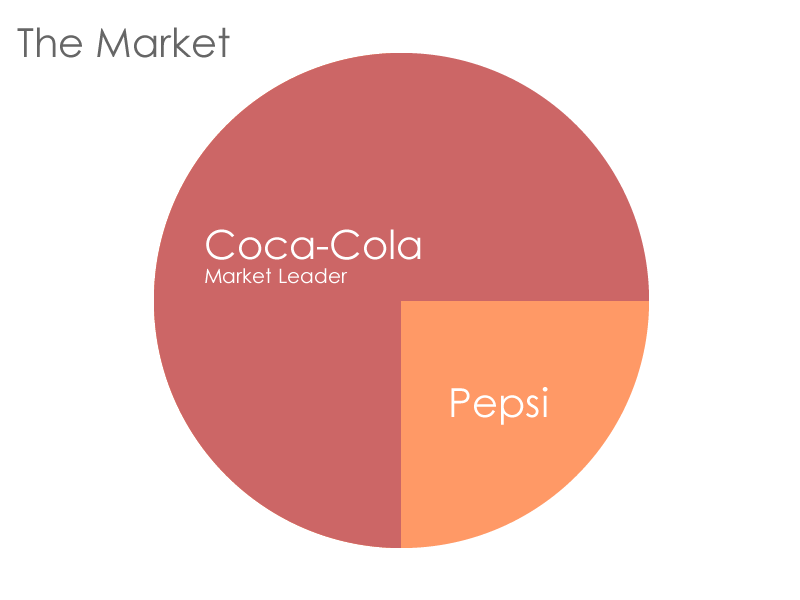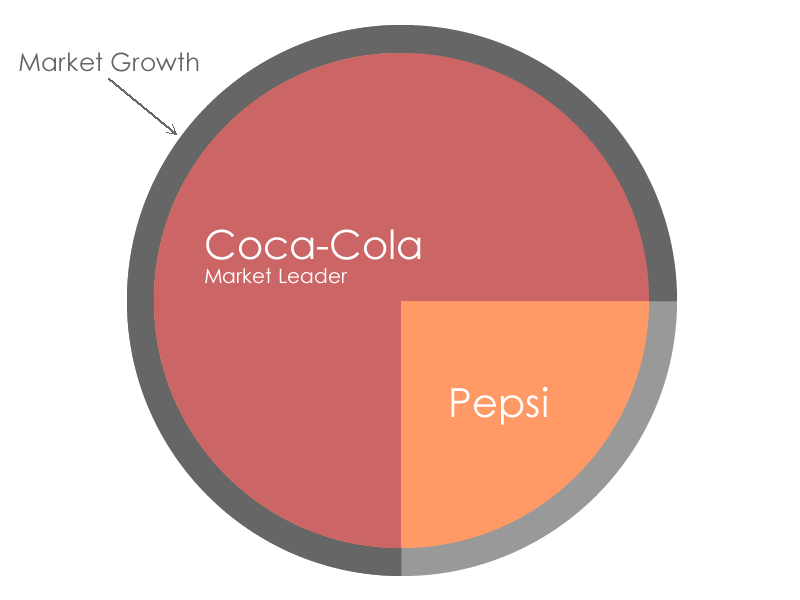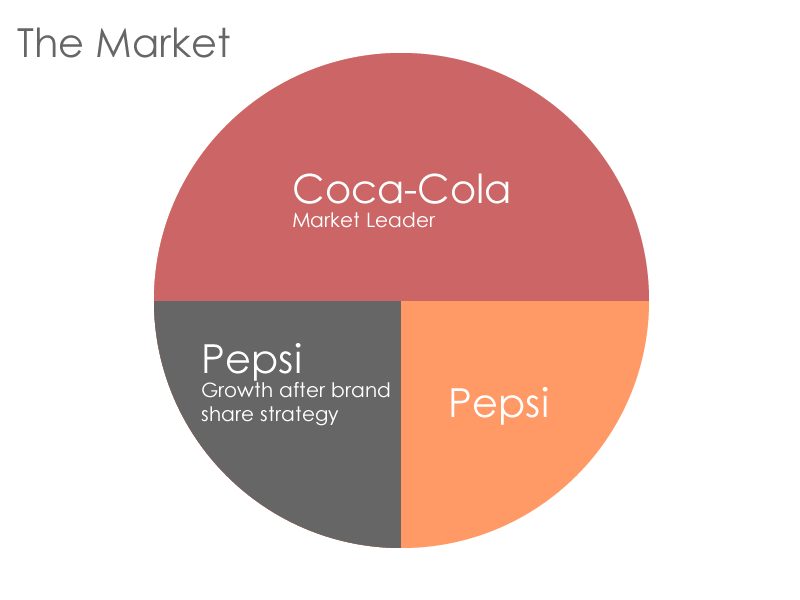There are two types of advertising that a brand can do:
Brand share or market growth.
If you are the market leader you will often want to do market growth advertising.
Ie. your aim is to grow the size of your market.
If you are not the market leader you will want to do brand share advertising.
Ie. growing your share of the market that already exists.
To carry out a market growth strategy when you are not the market leader can be a fruitless exercise.
To prove why, let’s for the sake of argument say that Coca-Cola has 75% share of the cola market whilst Pepsi controls the remaining 25%.
This is why it would be a silly idea for Pepsi to focus on a market growth strategy:
The grey area represents how the market has grown (the circle is now bigger) after a market growth advertising strategy.
Although Pepsi has gained some new customers and grown as a result (light-grey), Coca-Cola has grown by three times the amount (dark-grey).
The correct approach for Pepsi to take is to practice brand share marketing:
Using a brand share strategy, Pepsi is able to take customers away from Coca-Cola – not only do they gain ground but their competition loses some share.
To be a non-market leader and to grow the market is to hand new customers to your market leading rivals and can be the precursor to downfall.
That is why kitchen towel advertisers don’t convince you that you need kitchen towel, they instead tell you why their brand of kitchen towel is much more absorbant than any other brands available.
Using this thinking in e-commerce
This style of thinking doesn’t (or shouldn’t) just apply to advertising, it should be used in other forms of marketing.
An e-commerce website should not be solely focussed on convincing its visitors that they need to buy its product.
It should instead be telling its visitors why they should buy the product from them instead of their rivals. Their rival will often be the likes of Amazon and Ebay – both have market leading credentials.
If a small e-commerce website does a fantastic job of providing exciting information about a product but does not do a good job of giving reasons to buy from them instead of their rivals it is too easy for the customer to default to the market leader to fulfil the purchase.
Reasons can include:
- Price
- Security
- Speed of service
- Quality of service
- Familiarity
The trick of the small e-commerce site is to convince the website visitor that what they offer is better than their (often bigger) rivals.
The small e-commerce website must identify a game that their market leading rival is not playing and then win that game.
If you are too good at getting people interested in buying the product (market growth) but are not very good at selling yourself as the place to buy (brand share) you will be handing customers to your rivals.
Sadly, much of the battle is lost on price when it comes to e-commerce, but customers can be swayed.
A good brand share strategy should focus on shouting about simple promises that can be kept.
Customers should understand that you guarantee next day delivery.
They should understand that you are officially endorsed by the product maker to supply their best products.
Amazon makes it hard for customers to speak to a real person: you can guarantee that it is very easy to speak to a real person.
The brand share strategy that you offer depends on who you are.
The important thing is that you put most of your energy into telling people reasons to buy from you instead of your rivals.
Take from the e-commerce market that already exists, don’t get hung up on growing it.


